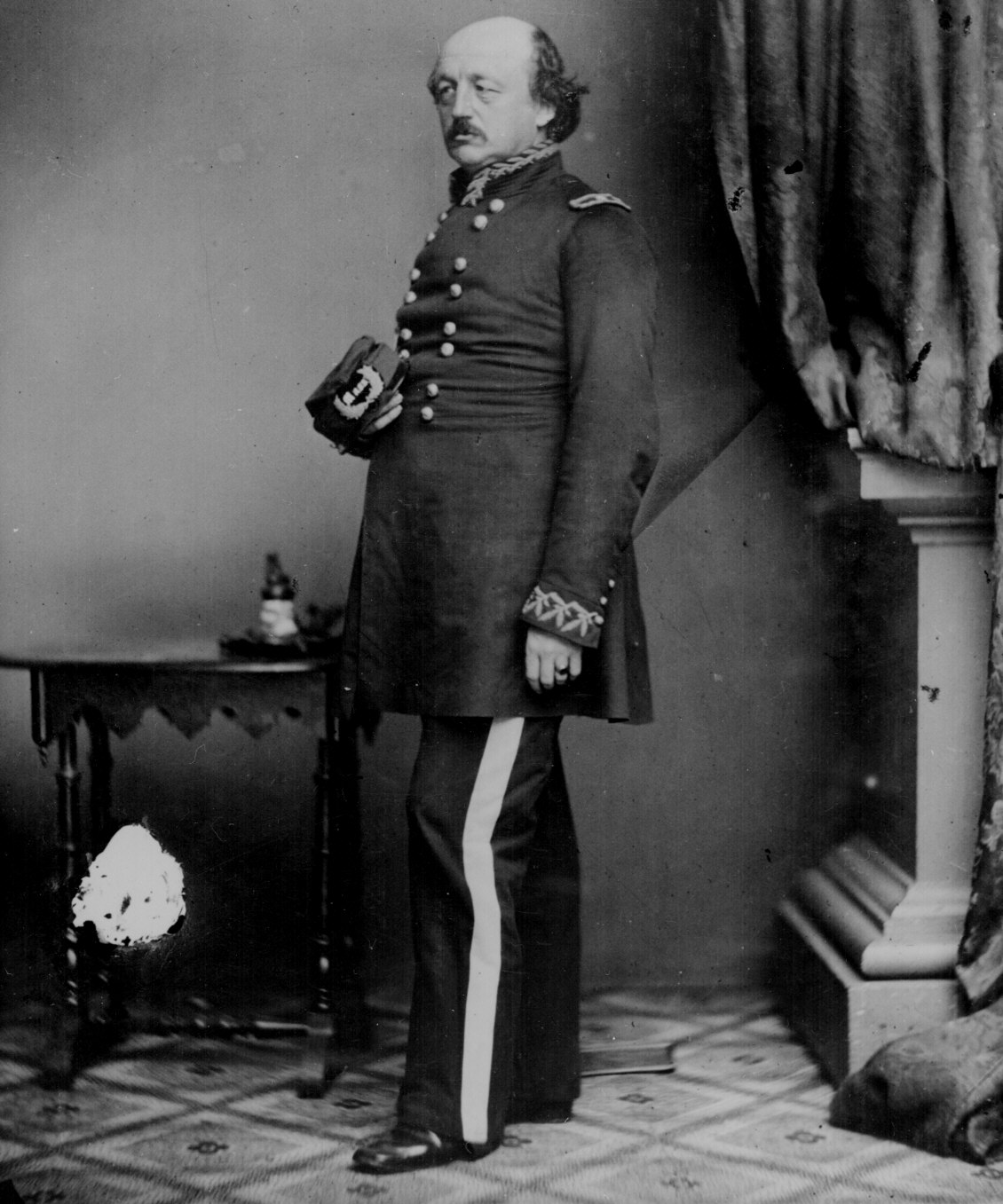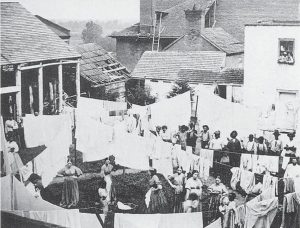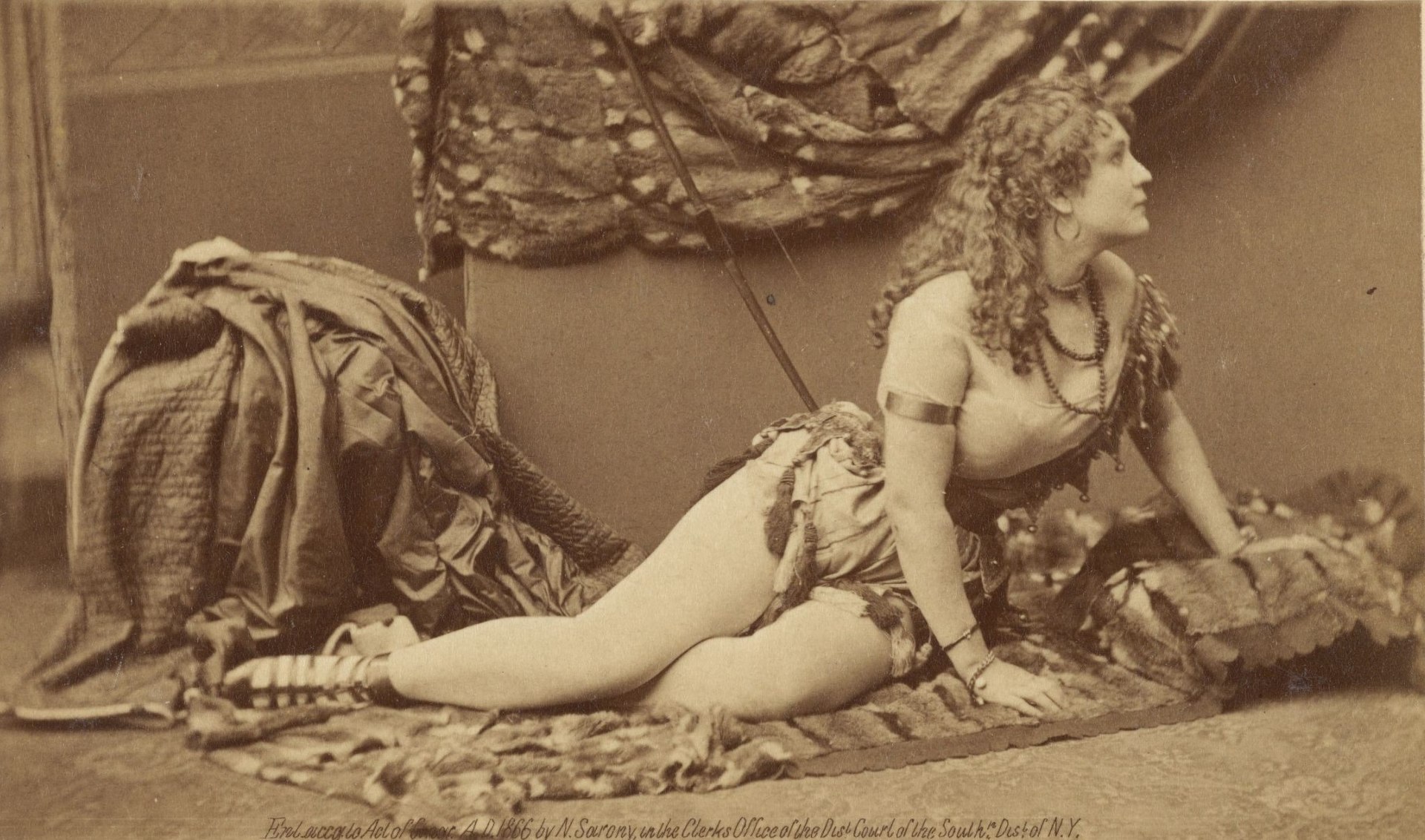Public Women: Sex in 19th-century America
And a BONUS episode!
I pulled this one out of my Patreon bonus content vault in order to share it with everyone. If you like it, clink on the Become a Patron page: for as little as $1 a month, you’ll help me keep making the show and get exclusive access to bonus features like this one! Plus fancy transcripts, images, sneak peeks, polls and more.
season 1, episode 4
Question: Who operates on the fringes of Victorian society, but is also one of most powerful women in the room? Who has more freedom than most ladies in 19th century America, but is feared because of the threat she poses?
Answer: Harlots; Cyprians; soiled doves; public women: the more time we spend in the Victorian era, the more we’ll find them everywhere. Some have more freedom, independence, and power than most women in 19th-century America; all of them have to use their wits and their wiles to keep afloat amidst a sea of prejudice and STDs.
But the word ‘prostitute’ goes far beyond a job description. It’s a label thrown around quite often, used to control women – any women - who stray too far outside the private sphere. It’s a line in the sand - a reminder of what happens when a woman crosses it. But when the Civil War came, so did new opportunities and freedoms – along with a swell of very visible prostitution, forcing a very corseted age to confront the sexy part of their lives.
And were those lives sexy? Like, at all? I know you’re imagining pursed lips and very high necklines, but there was definitely some steam going on in this era. Victorians were having sex, and even enjoying it, both within the sacred confines of marriage...and not. Horrors!
Let’s step behind the velvet curtain and talk about sex in Victorian America. We’ll explore how women and men relate to sex and their bodies – the idealized expectations, and the reality behind it. We’ll explore everything from rapidly changing courtship rituals to spicy correspondence to how to spot mail-order contraception. We’ll see how war changed the sexual landscape, freeing women – but imperiling and endangering them too.
Grab your fishnets, your French renovating pills, and your tiniest corset. Let’s go travelling.
Recommended Media
"How Prostitutes Settled the Wild West." Adam Ruins Everything, truTV/Collegehumor.com. Every now and again, my huband binges Adam Ruins Everything. This particular time, I was into it. This video is delightful to watch, but also really informative: who knew that wild west soiled doves were so influential?! I didn't.
The Story the Soldiers Wouldn’t Tell: Sex in the Civil War by Thomas P. Lowry, Stackpole Books, 1994. This is where I got some of my most !!! tidbits about sex in the Victorian era. Also, it's in the public domain over at Archive.org (which I love very much), making it very easy to get your hands on.
WhoresofYore.com. A delightful compendium of information on sex work, then and now.
"Selling Sex: 19th Century New York City Prostitution and Brothels" and "Victoria Woodhull: Free Love, Feminism & Finance." DIG Podcast. Really, you should listen to ALL of Dig's episodes if you're into women's history. They're done by four historians who do an incredible job with their research and writing, and offer an hour's worth of rich, fascinating gems.
"Prostitution Throughout History: Sumerian Temple Priestesses, Ottoman Brothel Workers, and Call-Girls for the Medieval Clergy." History Unplugged podcast. A super interesting history of prostitution: IS is the 'world's oldest profession'?
"A Vest Pocket Guide to Brothels in 19th-Century New York for Gentlemen on the Go." The New York Times. You can actually take a tour of this sex-fueled guidebook and it's very, very silly.
my sources
Books/academic articles
Sex and the Civil War: Soldiers, Pornography and the Making of American Morality by Judith Giesberg. University of North Carolina Press, 2017.
Unmentionable: The Victorian Lady's Guide to Sex, Marriage, and Manners by Therese O'Neill. Little, Brown and Company, 2016.
From Bondage to Contract: Wage Labor, Marriage, and the Market in the Age of Slave Emancipation by Amy Dru Stanley. Cambridge University Press, 1998.
Beneath the American Renaissance: The Subversive Imagination in the Age of Emerson and Melville by David S. Reynolds, Oxford University Press, 1988.
Liar Temptress Soldier Spy: Four Women Undercover in the Civil War by Karen Abbot. Harper, 2014.
Light on Dark Corners. A Complete Sexual Science and a Guide to Purity and Physical Manhood, Advice To Maiden, Wife, And Mother, Love, Courtship, And Marriage by B. G. Jefferis and J. L. Nichols. In the public domain, made available by Archive.org.
Intimate Matters: A History of Sexuality in America. By John D'Emilio and Estelle B. Freedman. New York: Harper and Row, Publishers, 1988. In the public domain, made available by Archive.org.
"Dangerous Liaisons: Working Women and Sexual Justice in the American Civil War." By E. Susan Barber and Charles F. Ritter, European Journal of American Studies, Vol. 10. Issue 1. Special Issue: Women in the USA.
"Public Women in Public Spaces: Prostitution and Union Military Experience, 1861-1865." Master's Thesis by Danielle Jeannine Cole, The University of Tennessee, 2007.
"The Gendered Geography of War: Confederate Women as Camp Followers." Thesis by Rachael Ryen, California Polytechnic State University, November 2011.
online
"Selling Sex." Capitalism by Gaslight: The Shadow Economies of 19th-century America. The Library Company of Philadelphia, 2012.
"Mother’s Friend: Birth Control in Nineteenth-Century America." Dr. Lauren MacIvor Thompson, the National Museum of Civil War Medicine, 2/5/2017.
"Madame on the Mall." Exhibition, Smithsonian Institute, 2005.
"A Brothel Reveals Its Secrets: CAS archaeology team examines 19th-century artifacts." Amy Laskowski, BU Today, Boston University. 1/31/2011.
"Race, Class, Gender, and Deviancy: The Criminalization of Prostitution." Ann M. Lucas. Berkeley Journal of Gender, Law & Justice, Vol 10, Issue 1, 9/1995.
"The salacious murder of this New York City prostitute changed the American media landscape." Stephanie Buck, Timeline.com, 4/29/2017.
"Women's Work and Sex Work in Ninteenth-Century America." Anya Jabour, The Mercy Street Revealed blog, PBS, 2/23/2016.
"Map Shows the Most Syphilitic States in the Union." Rebecca Onion, The Vault (Slate's History blog).
"Beauty, Virtue and Vice: Images of Women in Nineteenth-Century America." The American Antiquarian Society blog.
"Prostitution and the Civil War." Annika Jensen, The Gettysburg Compiler. 3/28/16.
"Prostitution and Venereal Disease in the American Civil War." Carole Adrienne, The Civil War RX blog.
"The Curious Case of Nashville's Frail Sisterhood." Angela Serratore, Smithsonian.com, 7/8/13.
"The Civil War: Sex and Soldiers." Dittrick Medical History Center, Case Western University.
"This Long-Lost Study on Victorian Sex Teachers a Very Modern Lesson." Sara Cloughlin, Refinery29. 9/8/2016.
"Clelia Duel Mosher." Biography.com
"Gender, Race, and Rape During the Civil War." Slavery, the value of chastity, and laws that favored men all made it difficult for women to find justice during the chaos of war. Julie Beck, The Atlantic, 2/20/2014.
"Victorian Women: Reality vs. Perception." Dangerous Ladies blog, Georgetown University, 4/2010.
"Rape and Justice in the Civil War." Crystal Feimster, The New York Times Opinionator blog.
"The Civil War and the Southern Belle." Karen Abbott, The New York Times Opinionator blog, 8/18/2014.
“Yes, I am a Free Lover. I have an inalienable, constitutional and natural right to love whom I may, to love as long or as short a period as I can; to change that love every day if I please, and with that right neither you nor any law you can frame have any right to interfere.”
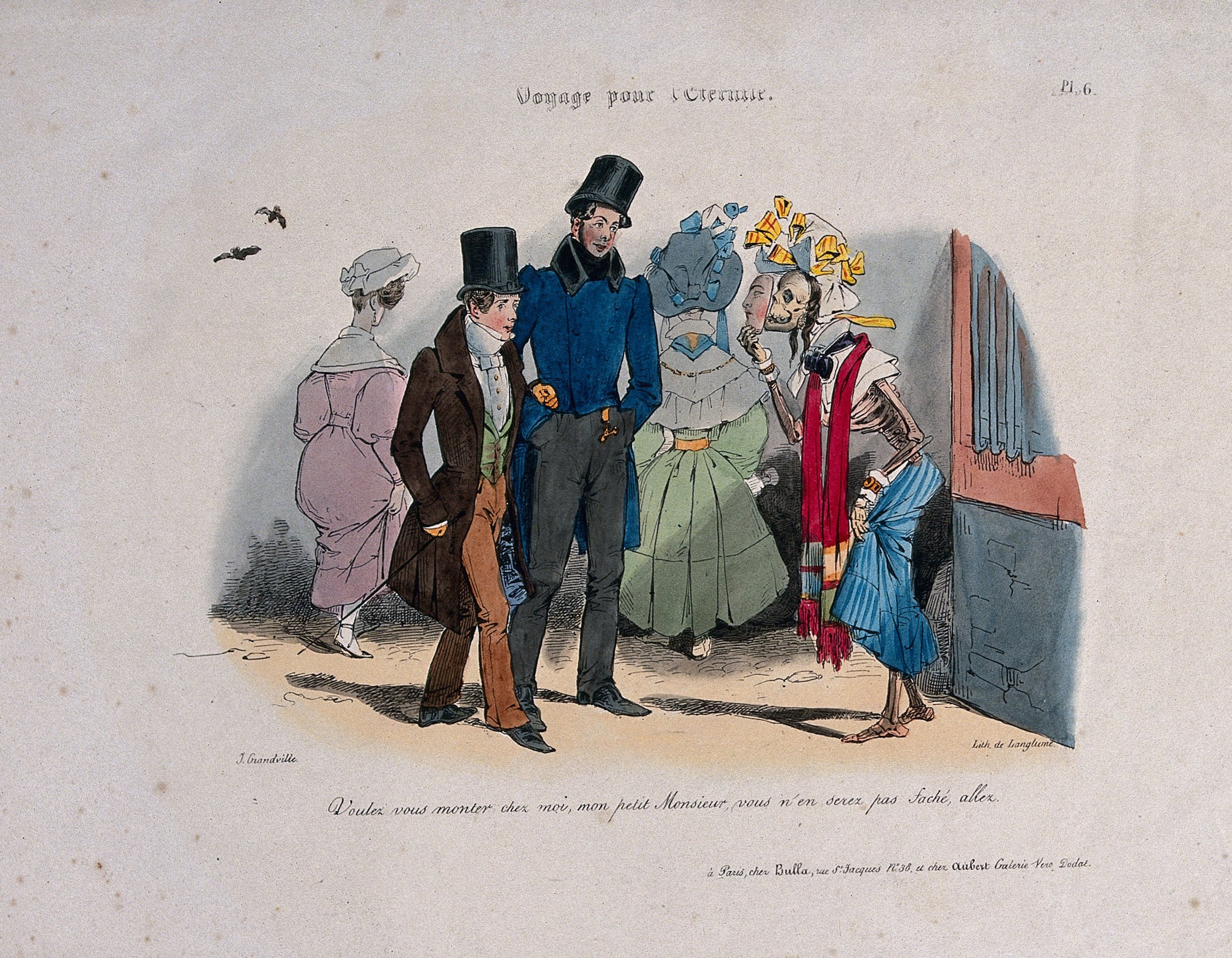
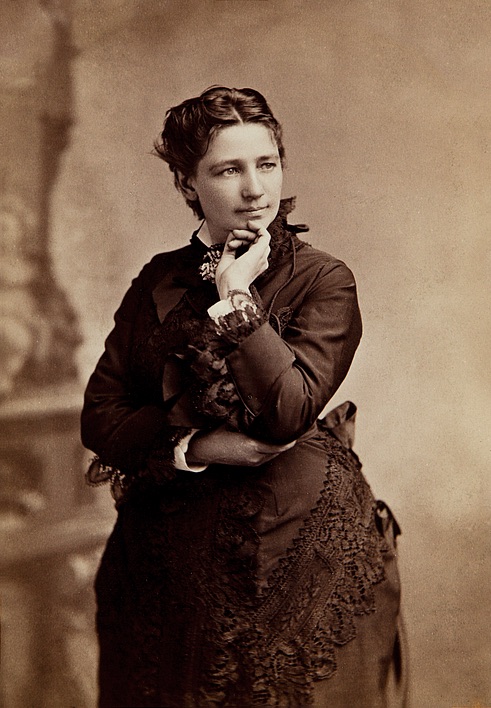
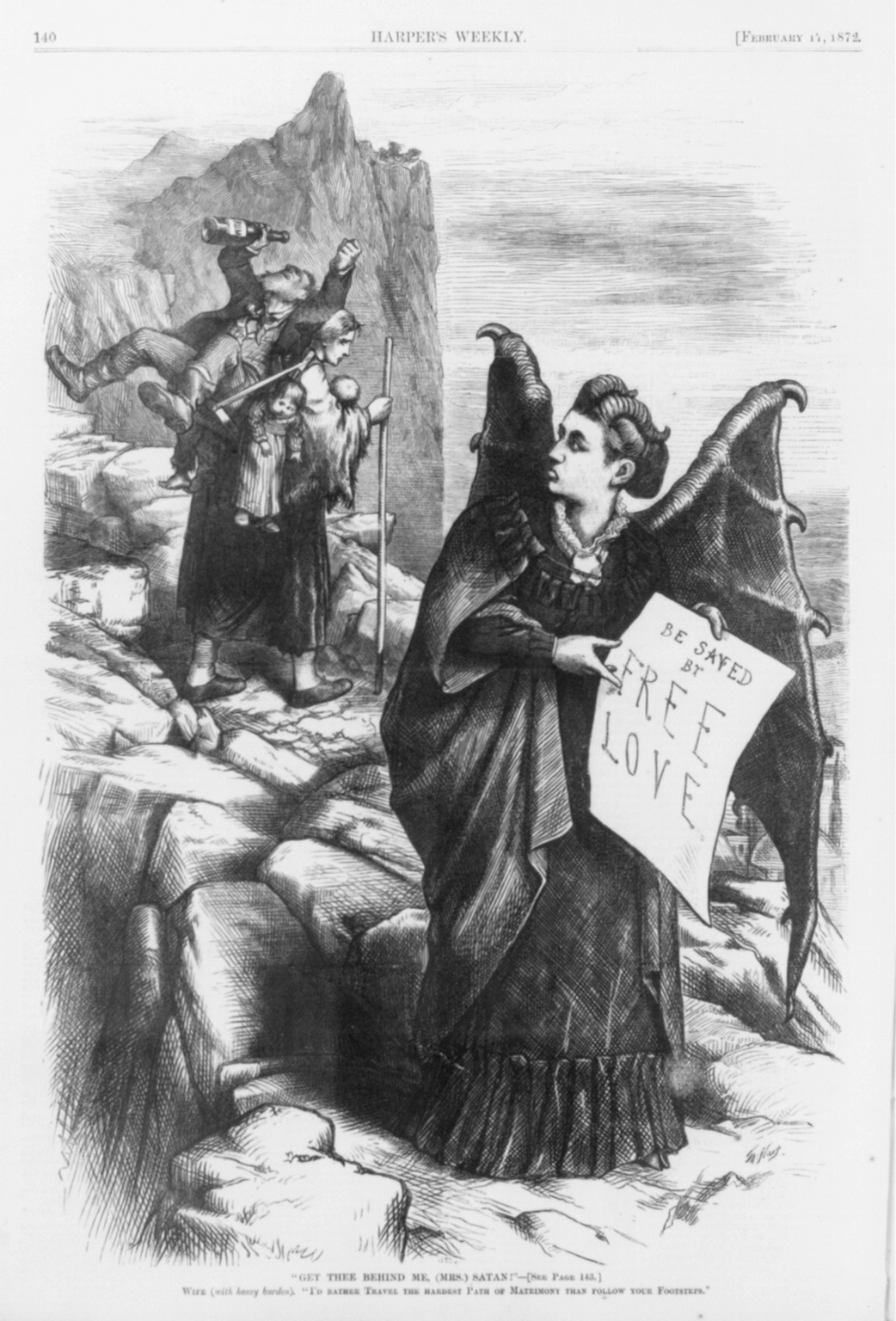
episode transcript
this won't match the episode exactly, as i add, subtract, and make random funnies as i record. but it's close.
So here we are, in 1861, nestled comfortably into a friend’s tastefully decorated parlor. The wine is flowing; the gentlemen are off smoking cigars. Let’s get wild and talk a bit about sex.
The standards of behavior are strict for ‘true women’ in this age. Women and men both have their ordained place in the scheme of things. Men go out and do the business. But you, my flower, are a domestic goddess, and a moral pillar for all around you. In a culture deeply rooted in Puritanism, and the idea that ‘fallen women’ ruin communities, you are the one who guides our spiritual lives. That’s why protecting your purity matters, and why you really mustn’t openly express any desire for life’s carnal pleasures.
But how do I do that, you wonder, hands wringing? Don’t worry. We have plenty of reading material to help us figure out how we should behave. The following advice about walking from one place to another comes from a book called Searchlights on Health: Light on Dark Corners. A Complete Sexual Science and a Guide to Purity and Physical Manhood, Advice To Maiden, Wife, And Mother, Love, Courtship, And Marriage:
A true lady will avoid familiarity towards gentlemen. Thus she should not permit her gentlemen friends to address her by her home name. Just ‘Miss’ will do.
If you expect to be without shouting distance of any man you know, you must have a chaperone to walk with you.
Gesture for emphasis, but never point.
Don’t be loud. Don’t laugh, if you can help it. Don’t wink.
In short, don’t attract attention. Someone may get confused and think you’re a woman for sale.
These books suggest that we ladies don’t have strong sexual urges. Dr. William Acton wrote that “the majority of women (happily for society) are not very much troubled with sexual feelings of any kind…Love of home, of children, and of domestic duties are the only passions they feel.” Mmkay, William. I’d say that the writers of the New Orleans Medical and Surgical Journal disagree with you. They advise factory foremen to listen for the telltale signs of ‘runaway sewing machines’ on the factory floor. Ladies working that pedal with a frenzy, rubbing their legs together, are sure to be pursuing carnal self-gratification!
And men? Well, of course they have carnal urges: too many, perhaps. But they shouldn’t indulge in them too often. As Searchlights on Health tells us, to do so might cause weakness, and even insanity. A self-help book for gentleman suggests that, however nice it might feel in the moment, “Masturbation or prostitution soon blight the brightest prospects a young man may have.” The author of Life: How to Enjoy and How To Prolong It concurs. He contests that a single gentlemanly emission is equal to losing two ounces of blood, and that 90% of deaths from TB were the result of sexual excess.
You know who else thought masturbation made you insane? A guy named Sylvester Graham. A few decades ago, this 30 year old wayward minister came up with a vegetarian, bland whole wheat diet, aimed at suppressing desire and thus decreasing your chances of “masturbatory insanity”. It is from him that we get the Graham Cracker, though his version was a lot less appetizing. Who knew that eating a s’more could dampen your desire to touch yourself?
Later in the century, a doctor named John Harvey Kellogg will continue the whole ‘nutrition for suppressing sexiness’ campaign by inventing Kellogg’s corn flakes. At his clinic, he’ll also give people yoghurt enemas and apply carbolic acid to women’s sensual parts as "an excellent means of allaying the abnormal excitement." So, not our favorite doctor. Think about that next time you eat a bowl of cereal.
Victorian America has a real terror with self-induced sexual pleasure. The fact that finding it is suspected of making you weak and crazy tells us...something...about Victorian America’s sexual anxieties, of which there are many.
So we can go ahead and say that the Victorian era is not a sexy one...right? Well...maybe not. Those around us have a lot of idealized notions about how men and women should behave, for sure. But these are ideals - something to shoot for. For most people, they’re not reality. Women of this era are far from sexless. I mean, their bodies are the same as ours, am I right?
Here’s an extreme example of Victorian sexuality to counterbalance the Grahams and Kelloggs. Up in Vermont in the 1840s, a man named John Humphrey Noyes started the utopian Oneida Community. This is a popular Protestant movement in this century, meant to establish a heaven on Earth. One day, John found himself feeling carnally covetous of his neighbor’s wife. Luckily, said neighbor was also coveting his wife, and both wives were coveting the men in return. So they basically swapped partners, just for fun, and it only brought them all closer. John suspected that coupling off in marriage was actually bad for the community, as it divided loyalties, and that encouraging sharing of ALL things would help create spiritual union in the group as a whole. So John formalized the practice into what he called Complex Marriage. Every man is linked to every woman by divine marriage. If a man feels attracted to a lady, he’ll approach her friend to see if she’s interested. If so, they retire to a private room and have fun. The man isn’t supposed to orgasm, as the point of this is NOT to procreate, but the woman sure can. In fact, she’s encouraged to. In a typical month, community members average five sexual partners. Outsiders find this all quite scandalous, but it actually seems like a mostly happy and unusually healthy place.
Later in the century, in the 1870s, a delightful feminist named Victoria Woodhull will do many things, amongst them become the first woman to run for president. Yes, that’s right. But she was also a true believer in Free Love: the belief that people should just loosen the hell up about who was sleeping with whom. She wrote: "Yes, I am a Free Lover. I have an inalienable, constitutional and natural right to love whom I may, to love as long or as short a period as I can; to change that love every day if I please, and with that right neither you nor any law you can frame have any right to interfere".
But these are extreme cases. What about us out here in the general population? Well, there’s a bit of a veil over Victorians’ sexual practices, but sex is certainly a subject of some fascination. Especially since, in the 1840s, doctor of phrenology Andrew Combe ‘discovered’ that amativeness is the largest section of our brains. We’re hard wired for sultry thoughts! We know this, in part, because of the large number of salacious novels, pamphlets, and newspaper stories available to us, and also because of the rise of the theater.
The theater is definitely on the rise in the 19th century, and with it several onstage fantasies that can be acceptably viewed while in public: women scantily clad AND acting out AND wearing pants. You can also take in a nude model show, or tableau vivant, where a lady can be found posing in titillating positions, only moving every so often to show off a different side.
There’s a thin line in this era, as in many others, between actresses and prostitutes. Our friend Victoria Woodhull will make extra money during her short stint as an actress in San Francisco by heading out into the audience and offering to make the play’s fantasies a reality. After all, performance is what prostitution is all about.
We love a good romance in the Victorian era, especially if it’s epic. If it’s also erotic in nature, that’s okay too. Racy lit has long been popular, both highbrow and smutty. At first, most erotic publications came from France and England - those foreigners! But when the importation of obscene texts became illegal in 1842, American publishers readily stepped up to fill the trashy pornographic novel void. Authors like George Thompson, whose nom de plume was Paul de Cock, blatantly copied some foreign works, but also wrote originals of his own. These so-called ‘fancy books’ have names like Curtains Drawn Up, or The Education of Laura and Silas Shovewell and His Amours with the Nuns.
At first, these cheap paperbacks bound in telltale yellow were sold at train stations, news stands, and along docks. But now you don’t even have to go out to find these treasures. Changes in the postal code in the 1850s means that books can now be sent through the mail.
Many of them specialize in voyeurism, complete with illustrations: look, but don’t you touch.
There is a lot of descriptions of snowy globes and rose-tipped hillocks in these literary marvels. In The Green Family; Or, The Veil Removed, published in 1849, a man is so struck by a nude model’s…feminine essence…that he describes it thus: “What a splendid carnation adorns the main aperture, with its fascinating fringe of sea-moss.” Nevermind that said model has been drugged and forced into this situation against her will. It’s just a book, after all!
Like back in our time, many of these books contain fantasies that are considered taboo: one of these will become particularly poignant during war time. That is, the combination of violence with pain. While certainly not considered pornography, it’s sort of fascinating to note that some works written by abolitionists are accused of using sex to get people to care about the evils of slavery. Even Harriet Beecher Stowe, who wrote Uncle Tom’s Cabin to try and get people to wake up to slavery, was accused of making violence against the enslaved salacious. Their intentions were good, but the tactics they used to evoke shock and horror were the same ones used by writers like Paul de Cock to titillate their readers. Some abolitionists worried that the undiscerning reader wouldn’t be able to tell the difference.
With the growth of cheaply available printed material, major newspapers are trying to compete with an ever-growing number of gossip rags by combining women, sex and violence. In reporting on certain crimes, particularly against lower class women, we’re seeing some of the earliest examples of using sex to sell. Let’s stop briefly to examine the case of Dorcas Doyen, which highlights both the highs and lows of prostitution in this era AND how salaciously the media is covering women of loose morals.
Dorcas was born in Maine to a working-class family, with a raging alcoholic father, a dead mother, and little prospects. She became a domestic servant at 12. At 17, she was seduced by a bank cashier, and soon found herself disgraced. So she did what she could: moved to New York City and became Helen Jewett, high-class woman of the evening. She was much lauded and admired by the men about town, and she became an independent woman. But at age 23, she was purportedly murdered by a regular customer, Richard Robinson, with a machete.
This murder got a lot of cover in newspapers. And the way they covered it tells us a lot. These articles lingered over Helen’s body, sexualizing both her and the crime.
“Slowly I began to discover the lineaments of the corpse,” said the New York Herald, one of the prominent newspaper of the time. “...as one would the beauties of a statue of marble…Not a vein was to be seen. The body looked as white — as full — as polished as the pure Parian marble. The perfect figure — the exquisite limbs — the fine face — the full arms — the beautiful bust — all — all surpassing in every respect the Venus de Medicis.”
The verdict tells us something, too. Before the all-male jury went off to deliberate, the judge made sure to tell them that they should really consider the characters of the witnesses when making their judgement. Amongst them was a prostitute, who are, he said, “not to be entitled to credit unless their testimony is corroborated by others, drawn from better sources…Testimony derived wholly from persons of this description…is not to be received.”
Richard was acquitted, by the way. Helen was later dug up and studied by local medical students. Apparently her skeleton hung in a closet there, exposed and worked over even in death.
But let’s get back to the ladies and their sexual desires.
No matter how many books suggest women shouldn’t have sexy feelings, of course they do. We have plenty of letters and diary entries to prove it. Though courtship is so strict for some women in this era that they have very little opportunity to explore them. Until they’re engaged, that is. Even well-to-do ladies have a hard time keeping their hands off the objects of their affection when their chaperones discreetly leave them in parlors for some alone time. Sometimes this alone time involves...well. Let’s ask David Todd. He wrote in his diary that his fiance, Mabel, “will remember with pleasure the new sensation I caused her this evening.” In her diary, she wrote, “Well, I couldn’t help it. I woke up in the morning very happy though, and feeling not at all condemned.”
We don’t have a lot of written material about sex in this era, mostly because people didn’t write it down or later destroyed it. Letter burning was a common thing. But still, we know that during the war, when married couples are separated for long periods, they wrote letters back and forth that were the equivalent of sexting. Julia Higgins wrote several letters to her fiance about what they’d do together when he came home.
“I love you with all my heart and body,’ she gushed. ’And will keep it closed for you when you come home to break it open again it will be as tight as the first time you tried it.”
Oh my!
Starting in the 1890s, a woman doctor named Clelia Duel Mosher will conduct the first study of sexuality in America, and prove that ladies of this era do indeed seek sexual satisfaction. In interviewing 45 women about their sexual desires and practices, she’ll find that 78% of them have sexual desires independent of their husband’s interest, while 76% say they regularly experience orgasms, and some are very much upset when they don’t. One woman will say she found an unfulfilled orgasm “bad, even disastrous…” so disastrous that it caused “nerve-wracking imbalancing if such conditions continue.”
So there’s no reason to believe that we Victorian ladies aren’t having fun in the bedroom. But the appropriateness of said fun all depends on the how, where, and why.
Victorian America is big on repression, and that produces some neuroses and beliefs that are going to seem strange to our modern ears. For instance, there’s a belief, helped along by the doctors, that women who crave sex are somehow depraved. They might even be EVIL. A sexual woman is closer to nature and our baser instincts, and thus more likely to get out of control. She might even overpower a man and force him to do her bidding. Thus an overtly sexual woman is dangerous. She upsets the delicate balance we’re trying to keep.
For the most part, we believe that it’s totally acceptable to find your jollies, but only if you do it in a marriage bed with at least a vague hope of producing children. Sex, like a woman’s role, must happen in the private sphere. Desire, when expressed in any way in public, is seen as low bred and crass. Many people, women included, consider it, or even sex just for pleasure, to be a kind of prostitution.
So what happens if, say, you get naked with someone before marriage and everyone finds out about it? Or you run away with a man a la Lydia Bennet? Well...you might be made to marry the rogue who ran away with you. You might end up living on the fringes of society. But the worst fear, of course, is that you’ll end up a fallen woman.
The Fallen Woman is a familiar trope in our culture. Sometimes they are painted as victims, pressed into sin by a man in her life. But often, it’s the woman’s fault. In the book Ellen Merton, The Belle of Lowell (1844), a sexually overeager factory worker “fell victim to her own unbridled passions.” Women’s rights activists see prostitution as evidence that it’s men’s sexual passions that lead to ruined women. But in a time when women are considered moral pillars, a fallen woman has no way to climb her way back up to redemption. She will always be tainted, untouchable. That makes becoming a prostitute, or even being called one, a truly horrifying thing.
Let’s leave our parlor, have a dalliance or two, and fall on down into a life of prostitution.
Ladies and their pleasure have long been tied to two archetypes: the divine woman, and the fallen one. But in Ancient Mesopotamia, paid sex could be an act of divine devotion. Men would go to visit the temples of Ishtar, goddess of love and war, and pay female acolytes for a sexual union that would lend them sacred strength. Prostitutes are all over the Bible - more so than chaste women, in some cases, and sometimes they even use their position to get power. Take a glimpse back in history and you’ll find all sorts of women who started out as prostitutes and went on to become influential rulers. Take Ching Shih, who was a Cantonese prostitute before she became one of the most successful pirate captains of all time. Or Empress Theodora, whose first job was as a famous actress and prostitute, who married an emperor and eventually was made a saint.
Hence why Victorian America has anxieties about sex and, particularly, about prostitutes. We’re living in a world of defined spheres - the public, where men work, and the private, where women are. But a prostitute is a PUBLIC woman. She has a well-stockinged leg in BOTH spheres; confusing the roles, freedoms and expectations our very society hinges on. The more visible she is, the more she challenges the status quo.
So let’s talk about the term PROSTITUTE. It isn’t just for women who trade money for sex. It’s for women who trade sex for food, or an apartment, or just a nice time - mistresses. It’s also sometimes used for women who are loud, or drunk, or violate social norms. In short, prostitution isn’t just a legal title. It’s a stick to threaten women with if they step outside their roles.
But more on that later. Tighten your corset: we’re going for a wander through the city streets.
How do women end up prostitutes in this era? Let’s start here: Imagine that you’re an immigrant, or maybe you’re just poor. Let’s talk about your career choices. Your options are as follows: you could become a domestic servant, as many girls do. Laundressing will earn you 10 bucks a month, if you’re lucky, when most men’s monthly salaries range from 10 to 20. A maid earns 4 to 7 dollars, while well-regarded cooks make 7 or 8. The problem with being a domestic is that you often have to live in someone’s house, and a chunk of your pay comes in the form of the roof over your head and the food you eat. You’ll have very little freedom to come and go. So really, you’re pretty close to an indentured servant. Plus, if you lose that place for being naughty - or if, say, your employer seduces you, which is a lot more common than anyone would like to say - you might not get a good reference, thus shunning you from future positions. For those of you who watch Downton Abbey, you’ll know how very dire that can be.
Perhaps nothing is more telling in terms of how domestic women become prostitutes like a study by Dr. William Sanger. In 1859, Sanger conducted a study of 2,000 prostitutes in New York City’s Blackwell’s Island prison, which showed that half had worked as domestic servants before becoming ladies of the evening. Another quarter had worked as seamstresses, and the rest were abandoned or abused wives. Many of them were 30 or under, and many were immigrants: about 57% were Irish. With a population of 1.2 million, he said, New York City had almost 8,000 harlots - one in 150. Most died within four years due to venereal disease or alcoholism, which says a lot about how glamorous such a life was...or, you know, not.
Instead of domestic servitude, a lot of girls are choosing work as seamstresses, or, increasingly, factory jobs. The Industrial Revolution is booming, which means jobs that don’t require you to live in at someone’s house and dump out their privy pots. They offer freedom, allowing you to mix and mingle unchaperoned with boys your own age. In places like the Bowery in New York City, suddenly it’s deemed acceptable for engaged couples to have sex before marriage. But there’s a dark side, too.
This kind of job might offer freedom, but not security. If the economy takes a dive, you might be out on the street. Plus, it’s really dangerous to be a factory girl. This is long before the 8-hour work day or such a thing as health and safety standards. It’s been argued that working as a prostitute is actually safer in this era in many respects than working in a factory. Hard to believe, but it’s true.
Not all women were turning tricks full-time. Many hard working, working-class girls often find themselves knocking on the door of prostitution, because their wages are so bad they have to side-hustle to make ends meet. Hence the common 19th-century prejudice that many seamstresses are also women for sale...many were, because they needed the income. It isn’t that uncommon to find a family of women - mothers and daughters – turning tricks in their homes on the weekend. This becomes much more likely for single women, or those with a husband who can’t or won’t provide. As reformer Caroline Dall proclaimed, to escape poverty, they had to “marry, ditch, die, or do worse.”
In a speech by William Lloyd Garrison, he quotes the experience of a well-meaning missionary who tried to convince a prostitute to change her ways:
“I know you mean well by coming here, but I don’t know how much good it will do. Instead of coming here you had better go around to some of these factories and shops that grind a poor girl down to $2 a week, and get them to pay better wages. It’s no use; a girl can’t live on what she gets.”
It turns out that paying women poor wages without giving them any security net has dire consequences in an environment where women have little agency. As our girl Caroline Dall said: "Lust is a better paymaster than the mill-owner or a tailor. Compare the price of labor with the price of dishonor, and you will cease to be surprised that women fall."

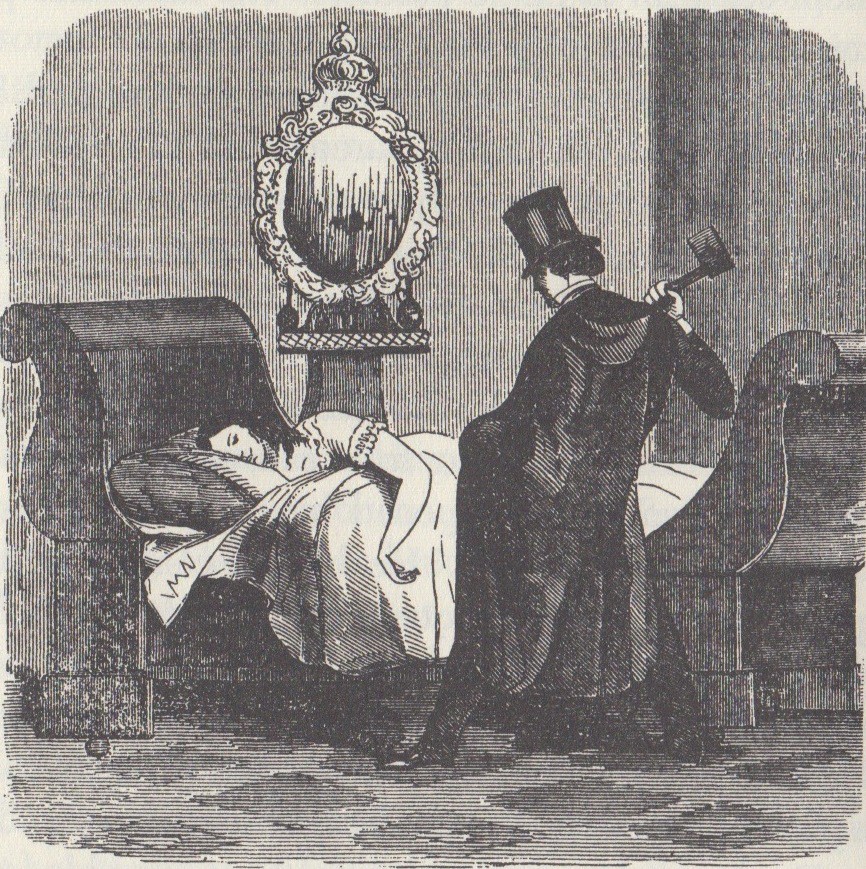


But of course, when these women are arrested, most people blame them instead of stopping to consider their environment, means, and circumstances, calling them moral degenerates. This isn’t about their social or economic conditions: Guys like William Acton and William Sanger argue that women fall into the lascivious life because they’re just naturally sinful. These women are just...clearly bad.
Look, I promised you sex. I didn’t say it would always be sexy.
In such circumstances, is a prostitute seizing what power she can, or is she a victim? It’s a question we’ll be returning to.
So what’s day to day life like for us soiled doves?
To some extent, it depends on your situation. In most cities, there’s a definite whorearchy: On the bottom rung are free agent streetwalkers; if you’re one of these, you’re probably free to roam where you want, but you’re way more exposed to the law and men’s meaner proclivities.
There are part-time prostitutes: actresses, seamstresses, barmaids, and ‘crib women’ who operated out of exposed rooms, modern-day Amsterdam style. If you’re a member of a bawdy house, which range in quality from completely grubby to acceptably grubby, you’ll have to pay some of your wages to your madame or pimp for room, board, and clothes. But if you’re lucky, you’re in one of the fancier pleasure houses. In these, you have a brothel keeper – often, an enterprising woman. She protects girls from the law, keeps them well fed, puts rules in place that help shield them from harsh treatment, and use set prices to ensure that the girls are paid their due.
In many ways, these houses simulate the private sphere: they welcome clients into a private parlor, where they are able to indulge in the delights of their choice, including gambling, meals, and of course the many flavors of the flesh, all in perfect privacy. It’s just like being at home, but with a lot more nudity! A place where fantasies can unfold. Some of these houses offer particular fancies - S&M, international lovers. There’s a place for you, no matter how you like having your corn ground.
Often, these houses are grouped into particular street and vice districts to contain them and keep them out of sight. In D.C., there is Murder Bay, in the area that is now Federal Triangle - that’s just a stone’s throw from the White House and the Capitol Building. In Richmond, Virginia, there’s Locust Alley; in Nashville, Tennessee, Smokey Row. These places tend to be loud, wild, and busy. Walt Whitman said that a man walking along Broadway in NYC “finds the western sidewalk full of prostitutes, jaunting up and down there, by ones, twos, or threes - on the look-out for customers.” NYC had such a plethora of such houses that a visitor could get himself a copy of “A Vest Pocket Guide to Brothels”, which would help steer him toward the best of the bunch.
Apparently there are indeed a lot of them. In the 1850s, the estimated total value of New York’s sex trade - including the sale of drinks, entertainment, food, board and services - was over 6 million dollars, beating out the brewing and printing industries: combined.
Of course, you will find many criminal types hanging out in these neighborhoods, likely using an array of delightful slang. You know I love slang, so let’s enjoy some:
lady bird: (n) a kept lady. “Lucky General Hooker has a lady bird to keep his tent warm.”
Heavers: (n) Persons in love. “Those heavers need to find a room, good and sharp-like.”
Barking-irons: (n) Pistols. “Don’t make me get out my barking irons and put you in the ground!”
Bag of nails: (n) Everything in confusion. “Well my, hasn’t this robbery just turned into a bag of nails?”
And, my favorite - Kate: (n) a smart, brazen-faced woman. “My god, this place is full of Kates. I’m never leaving!”
You aren’t likely to hear such talk at Mary Ann Hall’s fancy cathouse in Washington City, which occupies a prime position right on the National Mall, where the National Museum of the American Indian will one day stand. It’s worth noting, though, that the Mall of the future is much grander than what we’re looking at; in the 1860s, it’s actually a very stinky canal. Visitors to this grand three-story house are treated to exotic treats like berries and coconuts, and sumptuous meats that include things like turtle. You’ll also enjoy some French Piper-Heidsieck champagne: it’s always flowing. Around 18 fancy women live there, servicing well-to-do congressmen and, during the war, military officers. With lavish furnishings, marble tabletops, and much expensive porcelain, this place obviously charges a decent mint for their bonestorming services.
In situations like these, prostitutes - and especially madams - can do well, saving enough money to buy themselves an independent life. Madame Mary Ann Hall became a land owner, and quite a rich and influential woman. This is particularly true in the west, out on the frontier. Prostitutes are largely responsible for turning what are mostly man-filled mining settlements into actual townships, seeing a need and offering to fill it, and they’re so popular that they’re sometimes the richest person in town. They give back to their communities, too, offering social services like workers’ compensation for injured miners and hospitals for victims of domestic abuse. These powerful ladies even yield political influence. Wyoming will become the first territory to give women the vote in 1869, a half century before the rest of the country. In fact, they’ll refuse to even become a state unless they’re able to keep that right.
In this way, prostitutes can have more freedom, independence and prosperity than many of their ‘respectable’ female counterparts can claim. But of course, that’s not the only version of this story. Records show that six women will become Civil War soldiers to escape it. And of course, we can’t ignore that some women are quite literally forced into prostitution. The term “procurer” won’t become widely known until later this century, when a wave of moral reconstruction will sweep through America, but I’m sure it still happened: women coming to a city in search of work and find themselves sweet talked by someone, often a lady, then deflowered and thrown into a cathouse against her will. Not a nice thought.
While the act of trading sex for money is a rapidly growing trade, the country is still figuring out what the term ‘prostitute’ means, and in many states there aren’t specific laws against it. There are laws like the Lorette Ordinance, instituted in New Orleans in 1857, that said that prostitution was legal if they avoided “street-level solicitation, indecent dress, and the creation of scandal or disturbance.” This is key: many of these laws aren’t really about stopping prostitution altogether. They are about stopping that trade from spilling out into the public sphere, becoming visible, horrifying and confusing everyone about what constitutes a lady.
That’s not to say that soiled doves aren’t targeted. But they’re usually arrested for other things -public drunkenness, swearing, fighting with rival prostitutes (apparently a fairly common thing) - and then had this charge tacked on later. But many have enough money to bail themselves out and get back to business. For influential madames like Mary Ann Hall who kept private houses, most cops turn a blind eye, taking bribes and the occasional roll in the hay in kind.
While conducting this business, we’ll be paying very close attention to our personal hygiene and working to keep ourselves out of the family way. But how? A brothel privy in Boston, which will be rediscovered and studied in 2008 by a team at Boston University, holds answers: Hair combs, toothbrushes, and toothpaste at a time when vigorous brushing isn’t the norm. There are also syringes meant to be applied to the nether region, filled with things like mercury, arsenic, vinegar, and brandy.
Let’s talk about family planning, as this applies to both soiled doves AND your everyday respectable lady. In an era where childbirth is still somewhat dangerous, many a married woman is keen to limit family size as well.
But how? Well, there are melting suppositories, hot sitz baths, douches, and potions. Or you could try those French things called condoms. They’re made of animal intestine, as the ones made of vulcanized rubber won’t really come around until about a decade from now. Yuck.
Many people think family planning is a sin and have trouble talking about it, but some couples find their way onto the same page. Take Lester Ward, who accidentally left a copy of a guidebook on marriage behind on a walk with his fiance, Lizzie. He made sure to wander off for long enough that she could have a good read. Some women go directly to each other. Mary Hallock Foote wrote to a lady friend with some advice from her own experience:
“It sounds perfectly revolting,’ she wrote of her protection methods. ‘But one must face anything rather than the inevitable result of Nature’s methods.”
A woman can’t be sure she’s pregnant until she feels the quickening - the fetus moving around in her belly. It isn’t until the 1920s that there will be a pregnancy test; there is no peeing on a stick in this era. So any attempt to “restore menses”, as they say, before the quickening, isn’t abortion.
Such emmenagogues are readily available by mail, if you know where to look. The 1840s saw a rise in advertisements for mail-order abortifacients: things like Beecham’s Pills and Dr. Peter’s French Renovating Pills. If you see the word “French” in the ad, that’s a clue. Madame Restell, who ran an abortion clinic for three decades, ran an ad in 1839 aimed not at loose ladies, but at married women “…Is it moral for parents to increase their families, regardless of consequences to themselves, or the well being of their offspring, when a simple, easy, healthy, and certain remedy is within our control?” Good question, Madame.
But sometimes it’s too late for such things, and you need to resort to dire measures. There are some doctors who might help you, like Madame Restell, but most women can’t or won’t go to them. Instead, they’ll take matters into their own hands. Most are passed down in oral tradition: concoctions made at home that contain things like dried chicken parts, gunpowder, calomel, a juniper variety called savin, and turpentine.
Let’s be clear: women who employ these methods are from all classes, both married and not. Three studies done in the 1860s suggest that up to 20% of pregnancies end in abortion. Woah.
It’s particularly prevalent among those who can’t afford to be pregnant: unmarried women, particularly poor or servants, and enslaved women suffering from advances from the men who control them. One of these, an African American woman named Emily Beeks, tried to get herself out of the family way by drinking a tea of wild tansy, whiskey and borax. That’s the stuff you find in laundry detergent. When that didn’t work, poor Emily tried to use a sharp instrument and died of infection. That’s what happens when you take away support and education in the realm of reproduction.
But let’s leave this darkness behind, for now, and get back to being Cyprian ladies. What happens to the sex trade, and women’s sex lives in general, when the Civil War starts up?
This war is loosening a whole lot of things, including Victorian America’s courtship rituals. Where before you wouldn’t even be alone with a man until you’re engaged to him, and your entire courtship will probably have been chaperoned by guardians, increased travel and freedom means that men and women are able to spend time together as never before. Before, a respectable girl wouldn’t be caught dead walking without a male guardian. Now they’re doing it all over the place, and it’s got everybody all hot and bothered.
War has a way of heightening emotion while also relaxing the romantic atmosphere. There’s nothing like a man in uniform to get the wild heart jumping, and nothing like the fear of losing said soldier to make a girl hitch her wagon to a questionable match. A 16-year-old Richmond girl wrote, “It is wicked in me to wish that I had gone out so that I might see them, and not to wish that I had gone to church, but I love the soldiers so much, that I forget almost everything else...” Some women worry they’ll die an old maid if they don’t hurry up and find themselves a husband. So they’re making quick romantic decisions, often without consulting their family. Secret engagements and loose arrangements abound. One Georgia girl wrote to her fiance in the army that: “Neither of us is to consider this engagement binding. If another is loved, no sense of honor will prevent our immediately letting the other know of it...” But a girl has to be careful. Confederate officer Frank Adams wrote home to his sister about a soldier who married a new woman every time his regiment moved from town to town. A woman in Richmond, upon becoming pregnant after an affair with a married officer, tried to give herself an abortion….and died. That got dark quickly.
With all of this social and moral laxity happening, there’s a huge uptick in prostitution. Why? For one, men are finding themselves far from home, often for the first time in their lives. Their wives aren’t there to temper them or lie with them, and these men were without comfort during a very trying time. They could die tomorrow. They have a steady paycheck. They have fears, and these women are there to soothe them.
Especially in cities like Washington and Richmond, full of soldiers, and prostitutes who are becoming more visible than they’ve ever been. They’re riding in open carriages through respectable areas with their gentleman callers, shouting and flashing and generally causing a bit of a ruckus.That’s scandalous for the rest of the ladies, who may or may not be keen for any back door fun. Southern diarist Mary Boykin Chesnut’s servant who got very upset when she watched a drunk soldier assault a lady on the street. Apparently, the woman “fought like a tigress...but the soldier drew his pistol and held the lady by one leg and his pistol in the other hand, and she was yelling like a stuck pig, and dancing and prancing!”
In this upheaval, an unwilling lady nurse or volunteer might find herself in waters she’d rather not swim in. But a willing lady of the evening has an opportunity to turn a roaring trade. In occupied cities where soldiers are billeted, with little to do outside of drilling, houses of ill repute pop up in spades. In Nashville, the number of prostitutes jumps from about 200 in 1860 to 1500 just two years later. In Washington City, some reports put the number of bawdy houses at 500 and the number of Cyprians at 5,000. One soldier wrote to his wife that "it is said that one house of every ten is a bawdy house - it is a perfect Sodom". But others are rather pleased with the situation. Soldiers “go down the line” together, a shorthand expression for going to a harlot’s den. They have delightful names, sometimes war-themed: Fort Sumter, the Headquarters, U.S.A..
“‘I tell you,’ wrote a soldier, who was apparently quite enjoying his time in the big smoke. ’Lager Beer and a horse and buggy and, in the evening, Horizontal Refreshments.’”
Most of these houses are in Murder Bay, where lady-loving General Joseph Hooker was asked to contain them. A lot of people called the neighborhood Hooker’s Division. Sadly, the term ‘hooker’ wasn’t born because of him, but some of his exploits explain why that theory seems plausible.
Some soldiers don’t even have to seek it out – the ladies come to them. In Memphis, some women set up floating brothels, and would go swimming next to naval boats in, as one witness put it, “a costume similar to that work by Mrs. Eve.”
Sometimes soldiers even help set up villages for ladies of evening. One young Sanitary Commission worker wrote angrily home to his father about how soldiers in City Point, VA, had used army money to set up a “whole city of whores.” When he complained to one of a higher up, he argued that soldiers needed such outlets. They’d been told they weren’t to rape Southern women - the boy had already seen a few executed for doing so - so this was to keep them on more or less the straight and narrow. “Think of it, father,” he wrote. “He implies our devoted soldiers would become rapers and satyrs if not for these creatures.”
True statement, but still, the demand is huge. Even temperate men who love their wives sometimes struggle to abstain. Why? These men didn’t have the usual checks and balances to keep them from their moral duty. Many are young, and probably have never had a sexual experience. Both ladies and man struggle with the pressing question: they could die tomorrow: why not live tonight?
Plus, it was considered a way to showcase your manhood. As one private who spent time in Nashville reminisced, “an old saying that no man could be a soldier unless he had gone through Smokey Row.”
And why are so many women taking up the life? Well, because in an unstable economy, it’s a way to make some money fast. As the war goes on, many women are made widows, faced financial ruin and need to make it on their own. When you’re living on the razor edge of destitution and every street corner is bursting with cashed-up soldiers, well…desperate times call for desperate measures.
Many of the military higher ups don’t love the sudden influx of ladies of the evening. Civilians, too, are horrified by how brazenly they parade themselves in public: suddenly they’re wearing middle class clothes, riding openly in carriages and arm in arm with men down the street. As one soldier wrote home to his wife, “They monopolize everything...I have seen 6 & 8 in a carriage driving by drinking and carousing singing and hollering like so many drunken men.” You can’t ignore it. One newspaper called women who pretended not to notice it had the “false squeamishness of the young lady, who refused to wear a watch in her bosom, because it had hands.”
Again, the problem isn’t that prostitution exists – that’s long been true. It’s that it is becoming too visible. And thus the army tried hard to crack down through crime and punishment. In D.C., General Order 17, in 1862, decreed that police should arrest “all public prostitutes and all persons who lead a lewd and lascivious life.” Those arrested could either pay a fine, which they’d get back after six months of good behavior, or spend 90 days in a workhouse. Unsurprisingly, most just pay the fine and get back to business.When such orders fail, officials take on the ‘out of sight, out of mind’ approach. In Washington, all Southern-leaning ladies were more than welcome to have safe passage over the Mason-Dixon line. Go forth and prosper, ladies! Please! Somewhere ELSE.
But Cyprians can be useful to the war effort, now and again. Engaging in pillow talk can win a girl procure important secrets, making prostitutes well poised to be spies. Thomas McNiven, the leader of a Union spy network in Richmond, found a prolific source in “Clara A”, who catered to high ranking officers in Richmond’s Locust Alley. From her diary, because these gems are too good not to mention:
“General Limpy, the food fop—he must do the undressing. Shoes too.
Four big generals last night came together. Red beard really has red hair all over.
Christ! The praying general was brought in today by Preacher H. He is rough and brutal. After I serviced him, he dropped to his knees and asked God to forgive me for my sins!”
But mostly, prostitution is viewed as a major impediment to the war effort. They present a particular danger that Confederate soldier J. M. Jordan wrote home to his wife about: “I feel a delicacy in spelling them out to you as you are a female person, but however I reckon you can’t blush little things these times. It is the Pocks and the Clap.”
Venereal disease isn’t a passing problem - it’s a serious crisis. In the Union army, we’re talking more than 73,000 cases of syphilis and 100,000 of gonorrhea. 10% of white union soldiers will catch themselves a sexual disease. Those that contract them are often out for long periods, unable to fight anything at all. The 1864 Manual of Instructions for Enlisting and Discharging Soldiers instructs physicians to reject men with “eruptions of the skin and mucous membranes....”. Those with obvious signs of venereal disease would have to trot back home and give it to their wives. Hooray!
Symptoms aren’t nice, and often deadly. If you’re feeling like being grossed out back in our century, go ahead and Google Civil War/syphillis. Or don’t, if you don’t want to have bad dreams. The women, of course, suffer too, from things like blindness, paralysis, infertility, and birth defects. Treatments are also terrible, as we covered in our Lady Nurses episode. We’re talking things straight out of a fantasy novel. I’ve found doctor’s notes about the use of black wash, blue vitriol, and lunar caustic. It’s telling that one of the most effective is a mercury steam bath. It helps for a while, but isn’t a permanent cure. I’m pretty sure the only long-term effect of mercury is...dying. But as they say, “A night with Venus, a lifetime with Mercury.”
And of course, they blame the women for the moral ills and physical ailments cropping among the troops – it can’t be the SOLDIER’S fault! Such things are born of the evil uterus. Prostitutes prove a wonderful scapegoat for soldier’s choices, and military failure.
So how to deal with this vexing problem? Major General William Rosecrans, who led the Union’s Army of the Cumberland, was not best pleased with the number of soiled doves plying their trade with his soldiers in Nashville’s “Smoky Row.” So Nashville’s provost marshal Colonel George Spalding devised a plan: if he couldn't make his soldiers stop going to the ladies, then he would simply remove the temptation. He rounded hundreds of prostitutes up, then forced them onto a boat called, I kid you not, the Idahoe (ohhh! Youdahooooo!!!! OH!), on a voyage northward. The horrified captain said that having hundreds of Nashville’s ladies of the evening on his vessel was going to make his life very difficult. Indeed it did: no matter where he landed, no one would let him unload his cargo from this Floating Whorehouse. And meanwhile, back in Nashville, more prostitutes just moved in to fill the void.
While this is, on the face of it, pretty funny, these boat-bound ladies were suffering pretty bad conditions. Many were hustled on board without even a change of clothing, and what little alcohol they’d managed to get on with them was gone by day two. There was fighting: knives were apparently involved. Eventually, the captain returned to Nashville and squatted on the docks until the authorities let him unload in cargo, after a pointless three month journey. The captain was eventually reimbursed for the damages, but the deported women never were.
Spalding changed tack. Maybe he couldn’t stop sex from happening, but he could make sure it happened safely. And thus, we have America’s first attempt to regulate prostitution.
Each prostitute was made to register, buying a $5 license that gave her permission to work. An Army-approved doctor would examine her every 10 to 15 days, which of course she had to pay for. Prostituting without a license, or failing to appear for scheduled examinations, meant arrest for up to 30 days. If she didn’t pass the exam, she’d be sent to Hospital #11, or “the Pest House”, and wasn’t allowed to leave until she was 100% cured. These women were essentially forced in, like it or not, subject to guards watching over them and the threat of solitary confinement. IS this a hospital, or prison?
BUT, for many, this was a big improvement. Regulation meant they got regular medical care in a time when these were in short supply and out of their reach. They aren’t backdoor dealers anymore. They are regularly meeting up together, not in competition, but in open solidarity, giving them a sense of community that they’ve never felt before. And for the doctors treating these women, they learn a lot about how the disease is spread. Hey, they discover: it looks like the men are spreading the diseases to the WOMEN! Not that anyone listens: to do so would mean blaming men.
It turns out that bringing such industries out in the open can be beneficial for all involved: who would have thought?
To keep soldiers from answering the siren song of temptation, there are plenty of smutty materials floating around camp. So many, in fact, that Colonel Lafayette Baker, Union secret agent, confiscated $22,000 worth of obscene material, made “a bonfire of this sensual trash” on the White House lawn, and invited President Lincoln to watch.
Carte de visite, also called “barracks favorites”, are pictures cheaply bought at around 12 cents a piece and mounted on cardboard, meant to be traded like playing cards. They often feature nude actresses and have names like “The Wood Nymph’s Frolic” and “Toilet Mysteries”, meant to whisk the fighting men away. But one is war-themed, called “Storming the Enemy’s Breastworks.” It features, according to one advertisement, “an amorous Union soldier...playing with a Secech maiden, making a very indelicate assault.” Which is creepy on a number of levels, because it seems to be suggesting that a Confederate woman who says no to a Union soldier probably means YES. And doesn’t she deserve to be conquered? “...under the circumstances, we must conclude that the Breastworks unconditionally surrendered.” Yikes.
Another very popular work around camp is the novel Fanny Hill: memoirs of a woman of pleasure, complete with delightful illustrations. It’s about a young, innocent English farmgirl taking up the life of a prostitute and finding it all quite fine. Let’s read some aloud, as Union Colonel Ebenezer Pierce did to his privates in his tent of an evening. If you’ve got sensitive ears, I’d close them now. “As he stood on one side, unbuttoning his waistcoat and breeches, her fat brawny thighs hung down, and the whole greasy landscape lay fairly open to my view; a wide open mouthed gap, overshaded with a grizzly bush, seemed held out like a beggar's wallet for its provision.” Classy.
This kind of stuff might help bond soldiers or soothe a lonely night, I guess. But it’s problematic for women who spend time in and around army camps.
As the war goes on, many women start following the army around. There are vivandières, who hold an official position with the army and wear uniforms like those of the regiment with which they serve. They are almost like NFL watergirls, tending to the soldiers on the battlefield - some of them even carry weapons, given how close they sometimes are to the action. And then there are camp followers. The Daily Crescent newspaper put these women into three groups: the wives and daughters of officers, who are sometimes also vivandières; cooks and laundresses, there to either sell their services or support a relative; and ladies of the evening.
But some soldiers can’t tell the difference between them. They’re all technically public women, as they’re all doing things in public; so men can no longer hang a woman’s virtue on whether or not she stays at home. The phrase ‘camp follower’ is often treated like a synonym for ‘harlot’, throwing all of these women into the same pot. Many soldiers, including Orville C. Bumpass, thought that the war was turning all women into prostitutes. “Almost all of the women are given to whoredom,” he said, “& are the ugliest, sallow faced, shaggy headed, barefooted dirty wenches you ever saw.” And he isn’t the only one who thinks the women of America are going to hell in a handbasket. A woman from Mississippi complained in a letter to a friend that you could have a Southern girl for a few pounds of coffee. And it’s true that, in a war-torn country, there are many women in dire situations who feel they have no choice if they want to survive. Which is how the term ‘war-widow’ starts taking on some less-than-savory connotations.
How to tell who is a prostitute and who isn’t? Is the mistress of John Barger, of the 11th Tennessee Cavalry, one because she came to war with him and sleeps in his tent? What about Harriet Merrill, who was convinced to dress up as a man and join the army so she could be Captain Jerome B. Taft’s nightly comfort? What about field nurses, and soldiers who turn out to be girls? Their presence, as well as the actual harlots, blurs the line between who is fair game and who isn’t.
During the course of the war, more than 20,000 women worked for the Union and Confederate armies in military hospitals and in other capacities. But the more they come into contact with soldiers, the more vulnerable they are to those soldiers thinking they might be game for some woodsy fun.
And we’re talking about war here, so of course, there are some worrying assumptions about what a soldier is allowed to do to enemy women. In court cases brought against men accused of sexual misconduct, lawyers often point to the public nature of these women: haven’t they sacrificed some of their dignity by proffering services, of ANY kind, to soldiers?
Independent women on their own, and doing anything outside the bounds of polite society, are suspect. For us ladies, this is dangerous ground, which leads to some serious trouble.
Soldiers are certainly tried for inappropriate sexual conduct, or “conduct unbecoming of an officer and a gentleman”. Women are also arrested for prostitution during the war, but it’s a complicated charge. In most cases, the term ‘prostitute’ isn’t being applied because she trades sex for money. It’s a label meant to shame a woman acting in a way that men feel poses a threat.
Let’s talk about Union General Benjamin “Beast” Butler. He made many bold moves during his time in the army, but the one that earned him his special nickname is called the “Woman Order” (or General Order No. 28). In 1862, he and his troops came to occupy New Orleans, where the upper-class ladies were very mean to him and his soldiers. They exited churches when his officers entered them and encouraged the singing of Confederate songs. They also dumped what I hope were the contents of their chamberpots on them.
“So he created the Woman Order, which avowed that any lady by whose gesture, word, or act showed contempt for any U.S. officer would be arrested and treated as a ‘woman of the town’. Or, as disapproving Confederate P.G.T Beauregard put it, ‘to treat at their pleasure the ladies of the South as common harlots.’”
This kind of name calling is a serious business. One, it strikes at the honor of Southern women, demeaning them in ways they find degrading and upsetting. But also, think of the implications: does this order mean a Union soldier can assault you if you get a little lippy? If you’re labeled as a prostitute, what happens next? Southerners are outraged by this order. But our friend Beast defended it later, saying no one was ever arrested under the Order. Tell that to Eugenia Levy-Phillips, who was arrested and detained at Ship Island for laughing at a Union officer, and Anne Larue, arrested for wearing Confederate colors and handing out fliers.
There is still a line between ladies and prostitutes, but orders like this subvert and confuse it. Working women, whether they’re offering their laundry and nursing services to the army or spying on the enemy to try and aid the cause, fall into a tense kind of grey area in a time when anger and confusion are running high. And so while I’ve heard the Civil War referred to as a ‘gentleman’s war,’ it is often anything but. This is where, unsurprisingly, things get a lot less sexy.
We don’t know how much rape happened on the Confederate side of things, as many records were destroyed at the end of the war, and many victims probably never came forward. But we do know that, by 1865, more than 400 Union soldiers had been court-martialed for sexual crimes against women. An Illinois private at Camp Dennison spent a month at the guardhouse after offering a mother and her daughter, neither of them prostitutes, money for sex. FYI: he offered them $4 to have them both. Classy.
In occupied Southern lands, civilian women at home fear they will be raped if the Union takes over their town - and that’s a fair fear to have. 33 year old Mary Kirksey, a white widow in Tennessee, had her house and stable taken over as the headquarters for the 28th Pennsylvania Regiment. She did their sewing and laundry and sold them milk and eggs to support herself. Charles Hunter decided that this wasn’t enough from this southern woman. He tied her arms with her apron strings, gagged her, and had his way. Twice. When he was taken to court over it, he alleged that Mary had a reputation as a “bad woman”, which is why he felt he could take what he wanted without too much concern for her honor. Oh, Charles. If only I had my throwing stars handy!
But the women who suffer most are African American. In the Carolinas, a doctor complained: “No colored woman or girl was safe from the brutal lusts of the soldiers--and by soldiers I mean both officers and men....” I hate to break it to those of you who think the Yankees are all about liberating the enslaved and being beacons of freedom and equality. Because, well...often, they were not at all. Grace Barnes, a young, free black woman, did washing for Union troops at Pongo Bridge Camp near Norfolk, Virginia. While walking home with a pile of laundry, seven Union soldiers dragged her into the bushes...and did some truly horrible things to her. Let’s make sure to time travel back to this precise moment with some bear spray and a taser in our skirts, shall we?
The punishment for this kind of crime is variable, but there are rules about it. Abe Lincoln crafted General Order No. 100, or the Lieber Code, in 1863, which dictated how the enemy should be treated, particularly civilians and women. It said that “… rape, if committed by an American soldier in a hostile country against its inhabitants, are not only punishable as at home, but in all cases in which death is not inflicted the severer punishment shall be preferred.”
But even when they go to trial, it’s clear how difficult a time Victorian America has in talking about this crime. When sentencing one gentleman in Georgia, the court didn’t say anything about rape. Instead, they said that he: “feloniously did ravish and carnally know her.” Hanging or firing squad are the usual punishment...if the men are convicted. Which they aren’t always, and often their sentences are commuted.
Take Grace Barnes’ case. I’d love to tell you that they were all drawn and quartered, but no: while six of the seven men were handed guilty verdicts, all but one of their sentences were overturned, and they were returned to active duty. Only one of them saw any jail time. Sweet job, justice!
At least under the Leiber Law, women finally had a way to fight back against their aggressors. This military law gives them an opportunity that the civilian law doesn’t allow. In 1864, teenager Jenny Green, escaped slavery and went to the Union army in City Point, Virginia. There she was raped by a Lt. Andrew J. Smith. Instead of being forced into silence, she was able to bring charges against him: she was even allowed to testify, which is a big deal for this era. Her story was corroborated by William Hunter, the black chaplain of the 4th U.S. Colored Troops, and Nellie Wyatt, who also lived in the contraband camp. I’m happy to report that Smith was discharged from the Army and sentenced to 10 years hard labor. I’m unhappy to report that the jury wrote a note pleading that Andrew Smith’s former good character should allow him some clemency, commuting his sentence in whole or in part. Though many who reviewed the case disagreed, Abe Lincoln made a questionable call by requesting that attorney William Johnston revisit it. In his report, Johnston managed to turn poor Jenny from an innocent child to “a wicked woman who fails in her attempt to seduce a man...and pretends that an attempt was made to ravish her.” And so Abe decided that six months of hard labor was more than enough to punish Charles. How delightful. Though to his credit, Benjamin “Beast” Butler thought he should have been straight up shot instead.
These stories are tough to stomach, I know. And sadly, there are many more. So let’s end this dark chapter with a story that at offers at least some happy ending.
In 1864 a group of black laundresses - Keziah and Laura Davis, Emma Smith, Elizabeth Dallas, Rose Plummer, and (yes, this is real) - Elizabeth Taylor - were accosted in their laundry hut by four white officers. They exposed themselves, made rude suggestions, and proffered a bucket of oysters as payment. One of them tried to force Elizabeth into bed with him; when she said no thanks, he called her a bitch. To which she replied that she “was no more a bitch than he was a son-of-a-bitch.”
Keziah scorched the oyster man with a candle, and he later had the gall to ask her not to tell anyone about it because it would be embarrassing. But guess what? She did, and now we’re embarrassing him more than 200 years later. So, there’s that.
You could say that ALL women who worked for, and around, the army are becoming public women. They’re leaving the private sphere behind, both by choice and out of necessity, discovering new professions and new ways of moving through the world.
So does sex empower them, or does it endanger them? Are women finding sexual liberation in these turbulent times, or just finding their way into new webs of prejudice? The jury’s still out. But at least we know that some of them were having fun between the sheets.
Until next time.
In 1851, in an adaptation of Lord Bryon's Mazeppa, actress Adah Isaacs Menken rode across the stage on a horse...
in a body stocking. SCAN.DAL.OUS.
A theatrical cartes-de-visite (small-format photographs affixed to card stock), Courtesy of Houghton Library, Harvard Theater Collection, Harvard University



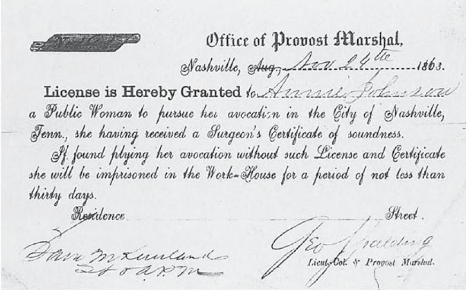
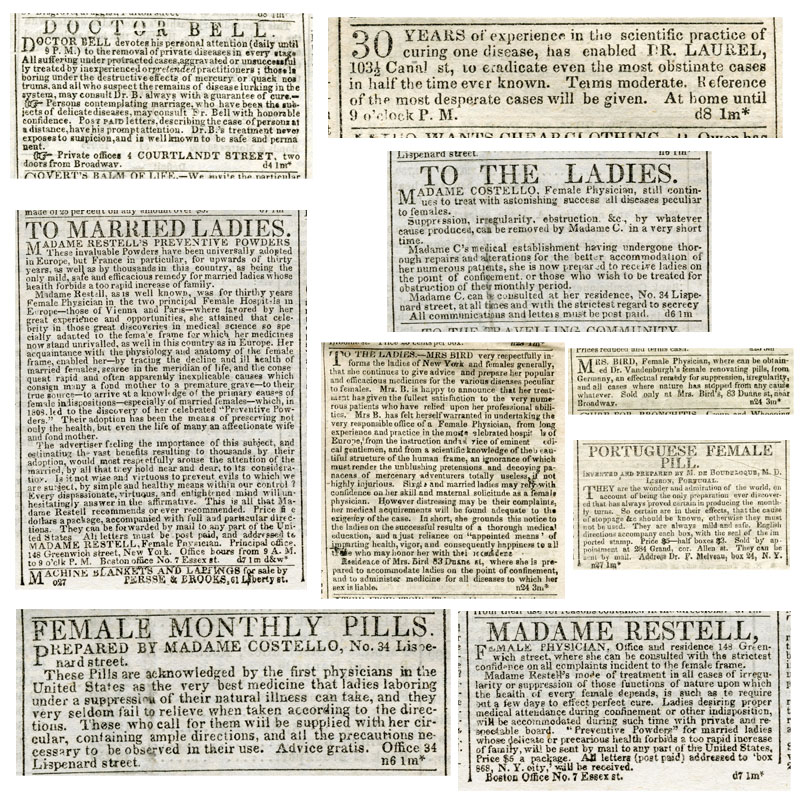
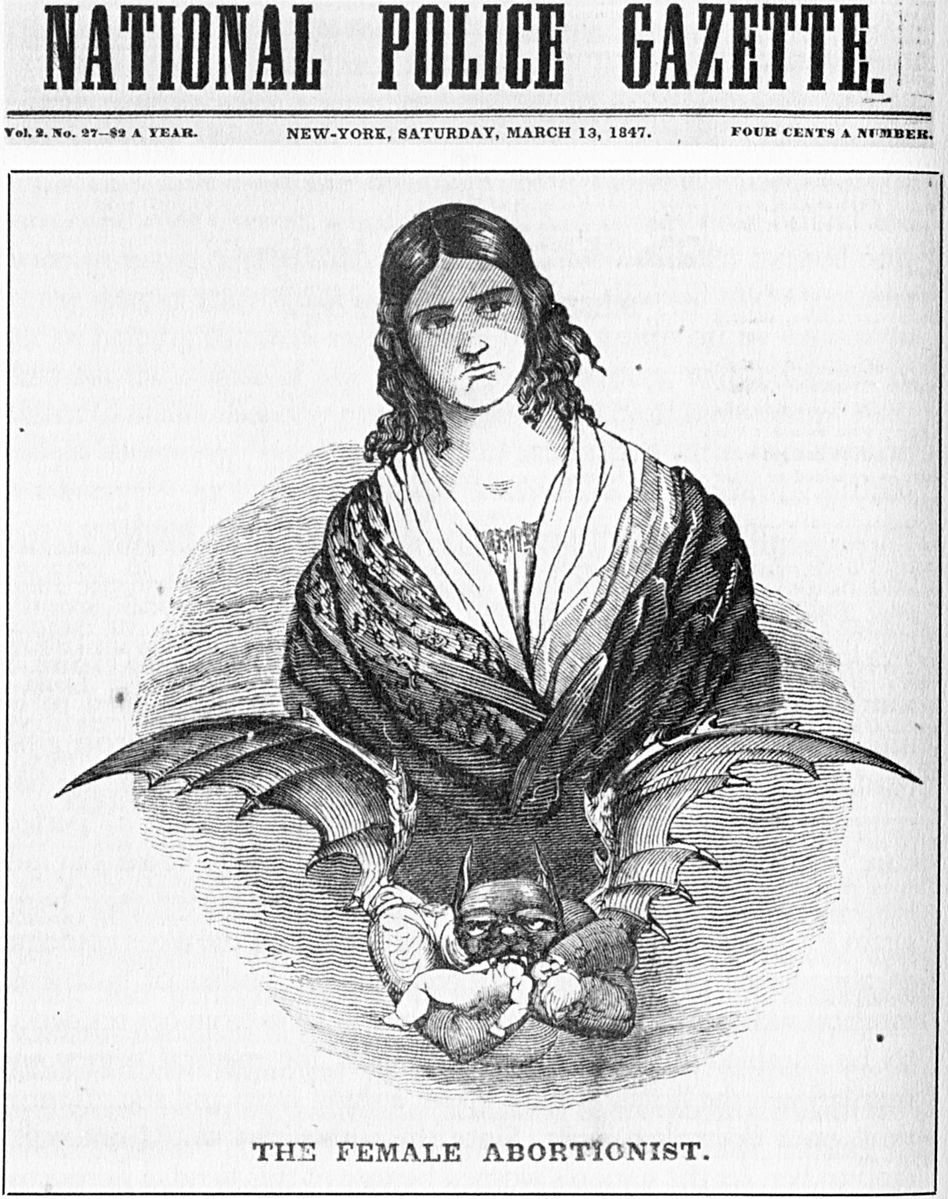

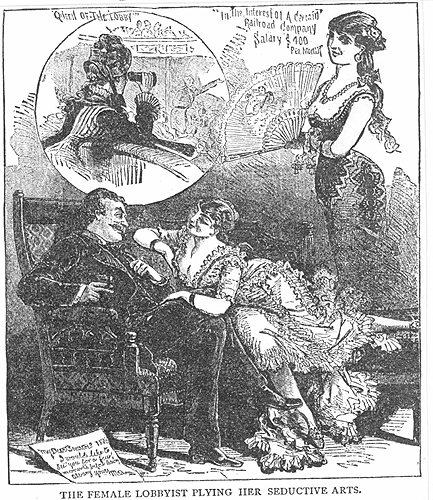
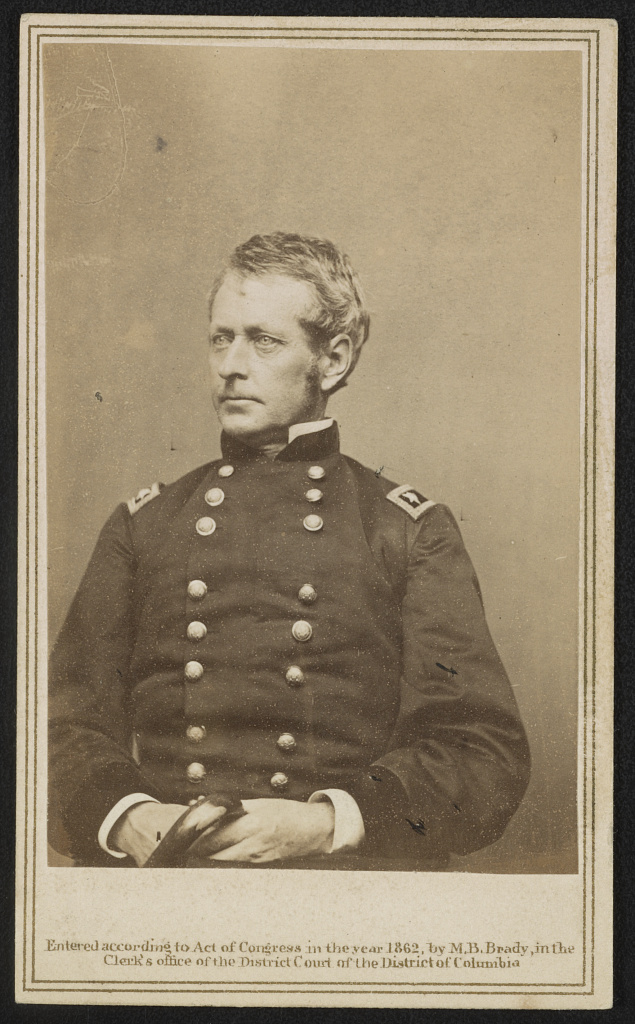
![Hooker’s Division was a concentrated area just a stone’s throw from the White House, where many bawdy houses and saloons resided. In fact, there they are: “109 bawdy-houses and list of 61 places where liquor was sold with government [sic] but withou](https://images.squarespace-cdn.com/content/v1/5af1745bf793926c5c8fa04e/1532857299401-7JKEF3Z3U9F25X4TUC4J/Hookers+Division.jpg)

